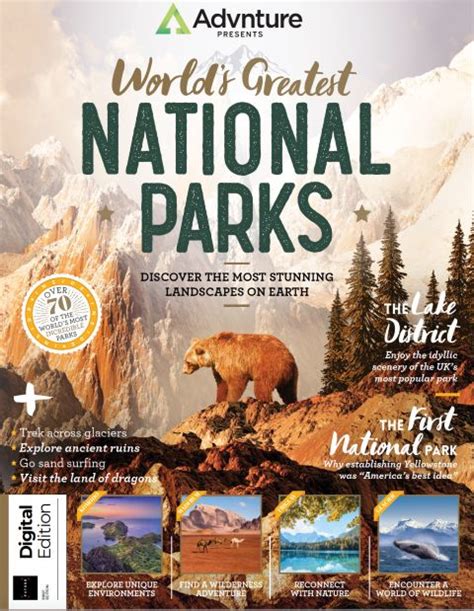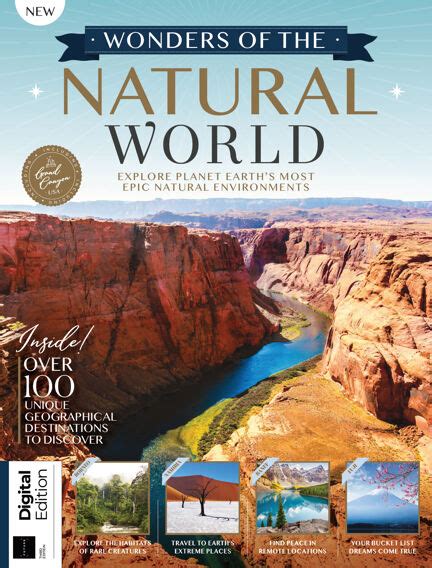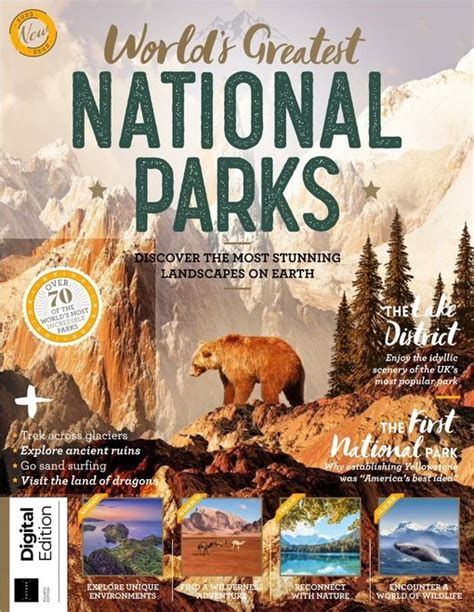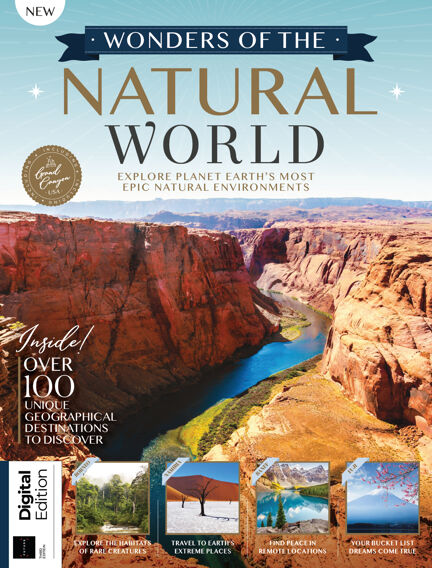Exploring the 7 Natural Wonders of the World is a dream for many travelers, offering a unique opportunity to witness some of the most awe-inspiring landscapes on Earth. Whether it’s the towering peaks of Mount Everest or the cascading beauty of Victoria Falls, each wonder presents its own set of challenges and rewards. This guide is designed to help you plan your journey, covering everything from the best time to visit each location to budgeting, travel logistics, and safety tips. By following this comprehensive guide, you’ll be well-prepared to embark on an unforgettable adventure, ensuring that you experience these natural marvels while respecting and preserving the environments that make them so extraordinary.
ritarblog.com will guide you through an in-depth exploration of this topic.
1. Research the 7 natural wonders and their locations
Embarking on a quest to witness the 7 Natural Wonders of the World demands meticulous preparation. As each wonder graces a distinct corner of the globe, comprehending their individual attributes and geographical positions is crucial for a well-structured itinerary.
The Seven Natural Wonders encompass a breathtaking array of geographical marvels. From Mount Everest, Asia’s towering peak, to the Great Barrier Reef, Australia’s expansive coral system, these wonders showcase the Earth’s grandeur. Victoria Falls, straddling the border of Zambia and Zimbabwe, stands as a colossal and renowned waterfall. The ethereal Northern Lights, a celestial display visible in high-latitude regions like Norway and Canada, add to the list. The Grand Canyon, a vast and iconic geological formation in the United States, also earns a place among these wonders. Parícutin Volcano in Mexico, a relatively young and active volcano, further highlights the dynamic nature of our planet. Finally, the Amazon Rainforest, South America’s expansive tropical rainforest, completes the list, a testament to the Earth’s biodiversity and ecological richness.
Researching each of these wonders involves understanding their climate, accessibility, and cultural significance. For example, Mount Everest’s base camp requires significant physical preparation and acclimatization, while the Northern Lights are best viewed during winter months in locations with minimal light pollution. Each location also has unique cultural and environmental considerations, such as respecting local customs and preserving the natural habitat. By gathering detailed information about each wonder, you can better prepare for your travels and ensure a meaningful and respectful experience at these remarkable sites.

2. Plan the best time of year to visit each wonder
Timing is crucial when planning to visit the 7 Natural Wonders of the World, as each destination has an optimal season that enhances the experience and ensures safety.
For Mount Everest, the best time to visit is during the pre-monsoon (April to early June) or post-monsoon (late September to November) seasons when the weather is more stable, and the skies are clear. The Great Barrier Reef is best explored between June and October, during Australia’s winter, when the water is calm and visibility for snorkeling and diving is excellent.
Victoria Falls is most impressive from February to May, following the rainy season, when the Zambezi River is at its peak flow. The Northern Lights are typically visible from late September to early April, with the darkest winter months offering the best chances in locations like Norway or Iceland.
For the Grand Canyon, spring (March to May) and fall (September to November) offer cooler temperatures and fewer crowds. Parícutin Volcano in Mexico is accessible year-round, but the dry season from November to April is ideal for hiking. Lastly, the Amazon Rainforest is best visited during the dry season (June to November), when wildlife is more active, and trails are less muddy, making exploration easier and more enjoyable.

3. Budgeting for your travels and accommodations
Planning a budget for visiting the 7 Natural Wonders of the World demands meticulous consideration, as expenses can fluctuate greatly based on the chosen destination and the time of year. Begin by approximating airfare, as it frequently constitutes the largest expense. Investigate flight deals and contemplate traveling during less popular seasons to potentially lower costs. For isolated destinations such as Mount Everest or the Amazon Rainforest, flights may be pricier, making advance booking essential.
Where you choose to stay is a crucial part of your trip. Accommodation options abound, from budget-friendly hostels and guesthouses to luxurious lodges and hotels. Popular destinations, like the Great Barrier Reef or the Grand Canyon, often require advance booking for the best rates and availability. Think about staying in local guesthouses or eco-lodges for a more authentic and often more affordable experience.
When calculating your travel budget, remember to factor in transportation costs within your destination country, such as car rentals or domestic flights. For some destinations, like viewing the Northern Lights or visiting Victoria Falls, guided tours may offer the most convenient and insightful way to explore. Make sure to include these tour costs in your overall budget planning.
Finally, set aside funds for meals, entrance fees, visas, and travel insurance. Creating a detailed budget will help you control spending and ensure you can fully experience these amazing natural wonders without financial worries.

4. Obtaining necessary visas and travel documents
When planning your journey to the 7 Natural Wonders of the World, obtaining the necessary visas and travel documents is a critical step. Each destination may have different entry requirements, so it’s important to research and prepare in advance.
Start by checking the visa requirements for each country you plan to visit. For example, visiting Mount Everest in Nepal will likely require a visa, which can often be obtained upon arrival or through an online application. Similarly, for the Great Barrier Reef in Australia or Victoria Falls in Zambia and Zimbabwe, you’ll need to secure the appropriate tourist visas.
Some countries may also require vaccinations or health certificates, especially for destinations like the Amazon Rainforest, where yellow fever vaccination is often mandatory. Make sure your passport is valid for at least six months beyond your travel dates, as many countries enforce this rule.
In addition to visas, consider purchasing travel insurance that covers medical emergencies, trip cancellations, and other unforeseen events. It’s also wise to carry copies of important documents, such as your passport, visa, and insurance details, both in physical form and digitally. By ensuring all your travel documents are in order, you’ll avoid potential delays and enjoy a smoother travel experience.
5. Choosing the best travel routes and transportation methods
To efficiently explore the 7 Natural Wonders of the World, carefully selecting travel routes and transportation methods is crucial. The accessibility of each destination and your overall travel itinerary will guide your choices.
To reach Mount Everest, most travelers first fly to Kathmandu, Nepal. From there, they take a domestic flight to Lukla, and then embark on a trek to the base camp. In a similar manner, reaching the Amazon Rainforest usually involves flying to major cities like Manaus in Brazil or Iquitos in Peru. Once there, travelers continue their journey by boat or land transportation to reach the heart of the jungle.
To experience the wonders of the Great Barrier Reef, travel to coastal Australian cities such as Cairns or Port Douglas. From there, boats or guided tours can transport you to the reef. To witness the awe-inspiring Northern Lights, fly to northern regions of countries like Norway, Iceland, or Canada. Upon arrival, local transportation will be necessary to reach optimal viewing locations.
The Grand Canyon can be reached by car or bus from major U.S. cities like Las Vegas or Phoenix. In contrast, Victoria Falls is accessible by air, with flights arriving in Livingstone, Zambia, or Victoria Falls, Zimbabwe.
To experience Parícutin Volcano, a journey to Michoacán, Mexico, is required. This can be accomplished through local transportation or guided tours. Thorough planning of your itinerary and transportation arrangements will guarantee a seamless and enjoyable expedition.
6. Packing essentials for different climates and terrains
Packing the right essentials for your journey to the 7 Natural Wonders of the World is crucial, as each destination presents unique climates and terrains. Start by researching the specific weather conditions and environment for each wonder during your visit.
For Mount Everest, cold-weather gear, including thermal clothing, a down jacket, and sturdy hiking boots, is essential. The Amazon Rainforest requires lightweight, moisture-wicking clothing, insect repellent, and waterproof gear to handle the humid, wet conditions.
At the Great Barrier Reef, pack swimwear, sunscreen, and a good underwater camera for snorkeling or diving. For the Northern Lights, prioritize warm layers, a heavy coat, insulated gloves, and a hat to endure the frigid temperatures.
When visiting the Grand Canyon, breathable clothing, a wide-brimmed hat, and plenty of water are vital for handling the heat and dry conditions. For Victoria Falls, quick-drying clothes and waterproof bags are useful for staying comfortable around the misty falls.
Lastly, for Parícutin Volcano, sturdy shoes and protective clothing are necessary for hiking the volcanic terrain. By packing according to the specific needs of each destination, you’ll be well-prepared for all the adventures that await.
7. Safety tips and precautions for each destination
Ensuring your safety while visiting the 7 Natural Wonders of the World involves being aware of specific precautions for each location.
At Mount Everest, altitude sickness is a major concern, so acclimatize slowly and consider hiring a local guide for safety. In the Amazon Rainforest, watch out for wildlife and insects; use insect repellent and follow local advice to avoid disease and hazards.
For the Great Barrier Reef, be mindful of marine life and follow safety instructions for snorkeling or diving. At the Northern Lights, dress warmly and avoid remote areas alone to ensure safety in extreme conditions.
The Grand Canyon requires caution on steep trails and proper hydration due to the heat; always stay on marked paths. Victoria Falls’ powerful mist can be slippery, so wear appropriate footwear and be cautious near the edge.
When exploring Parícutin Volcano, be aware of volcanic activity and follow local guidance on safety. Adhering to these safety tips and precautions will help you have a safe and enjoyable experience at each natural wonder.
8. Local guides and tours: benefits and recommendations
Local guides and tours can significantly enrich your experience at the 7 Natural Wonders of the World. Their intimate knowledge of the area provides valuable insights, allowing you to maximize your visit and navigate unfamiliar landscapes with ease.
Experienced guides play a vital role in both the Mount Everest trek and Amazon Rainforest explorations. In the Himalayas, they ensure the safety and well-being of climbers on their journey to base camp, offering invaluable support and expertise. Meanwhile, in the Amazon, local guides act as expert navigators, guiding adventurers through the dense jungle and enhancing the experience by helping them spot the region’s incredible wildlife.
For an unforgettable experience at the Great Barrier Reef, join a guided snorkeling or diving tour. Expert guides will share their knowledge of marine life and lead you to the most breathtaking spots. Similarly, when chasing the ethereal Northern Lights, tours provide local expertise, guiding you to optimal viewing locations and conditions.
At the Grand Canyon, ranger-led tours impart knowledge about the park’s geological formations and historical significance. Similarly, guided tours at Victoria Falls prioritize safety while navigating the falls, and also provide valuable insights into the region’s natural history.
At Parícutin Volcano, local guides are invaluable for navigating the rugged terrain and offering insights into the volcano’s fascinating formation. Opting for local guides and tours enhances the experience, making it both richer and safer at these extraordinary destinations.
9. Respecting and preserving the natural environment
Protecting the 7 Natural Wonders of the World is essential for their continued beauty and accessibility for future generations. It’s vital to respect and preserve these extraordinary sites by embracing the “Leave No Trace” philosophy. This means carrying out all your trash and minimizing your impact on the delicate ecosystems that make these wonders so unique.
On Mount Everest, strictly follow waste disposal guidelines and avoid disrupting wildlife. Within the Amazon Rainforest, remain on designated trails to minimize harm to sensitive ecosystems and be conscious of your interactions with local fauna.
When visiting the Great Barrier Reef, avoid touching or standing on coral reefs, and use eco-friendly sunscreen to protect marine life. For the Northern Lights, respect the local environment by not disturbing wildlife and keeping noise to a minimum.
At the Grand Canyon, stay on designated trails to prevent erosion, and be cautious with litter. For Victoria Falls, maintain a safe distance from the falls to avoid harming the delicate environment.
In the Parícutin Volcano area, follow local guidelines to prevent damage to volcanic landscapes. By practicing these environmental considerations, you’ll help preserve the beauty and integrity of these natural wonders.
10. Capturing your experience: photography and journaling tips
Capturing your experiences at the 7 Natural Wonders of the World through photography and journaling allows you to relive your adventures and share them with others. For photography, use a camera with good resolution and consider the lighting conditions specific to each wonder. Early mornings or late afternoons often provide the best natural light. Use a tripod for stability, especially in low-light situations or during long exposures, such as capturing the Northern Lights.
When journaling, document not only the visual aspects but also your personal experiences and emotions. Note the unique details of each location, including interactions with local guides and the impact of the environment. Write about your thoughts and reflections to create a rich, personal account of your travels.
Respect photography rules in protected areas, and ensure your activities do not disrupt the natural habitat. By blending thoughtful photography with reflective journaling, you’ll create lasting memories of your journey to these spectacular natural wonders.
Exploring the 7 Natural Wonders of the World is a journey of a lifetime, offering unparalleled experiences and breathtaking landscapes. By carefully planning your visit, from researching each location to budgeting, and respecting local guidelines, you ensure a memorable and responsible adventure. Embrace the diverse climates and terrains with appropriate gear, prioritize safety, and consider local guides to enrich your experience. Through thoughtful photography and journaling, capture the essence of these wonders. With preparation and respect, your travels will leave a lasting impression on both you and the natural world.
ritarblog.com

